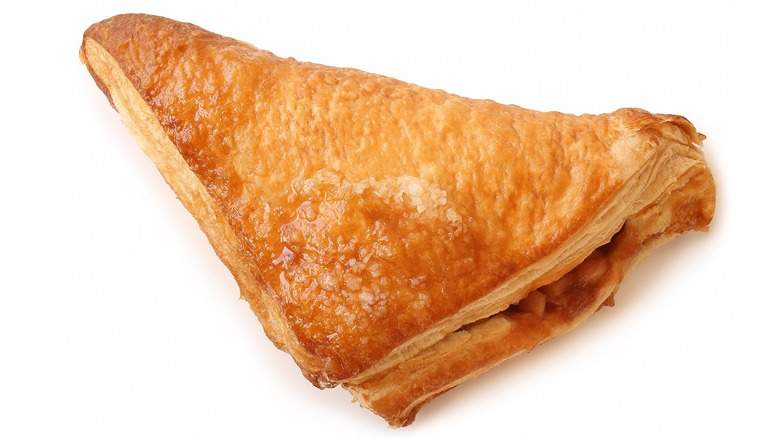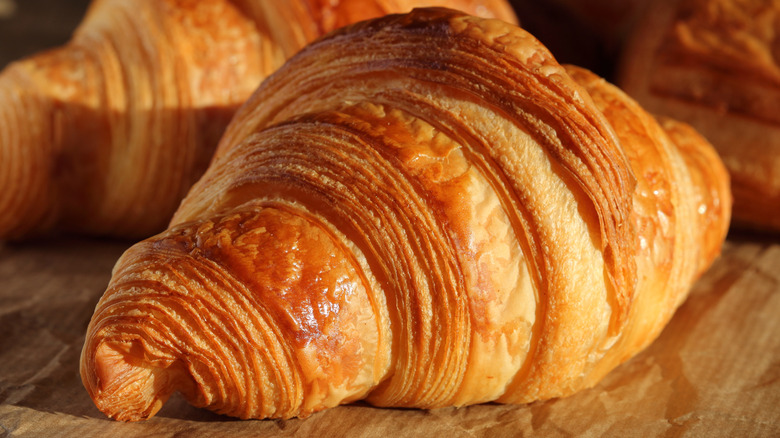The Puff Pastry Mistake You Need To Avoid For Higher Quality Bakes
We may receive a commission on purchases made from links.
Puff pastry is really finicky and time-consuming to do, and it seems that only the home bakers with time to spare or are feeling particularly ambitious. Puff pastry, or pâte feuilletée, is a classic French pastry dough that's folded around a block of butter and rolled out. Then the dough and block of butter get folded and rolled repeatedly to achieve flakey yet still moist layers of pastry in a process called lamination. Between folding and rolling out, the pastry chills in the refrigerator to firm up, which prevents the butter and the dough from combining — we want the butter and the dough to remain separate, according to MasterClass.
Of course, if you don't have the time or the patience for a traditional puff pastry recipe, you can go the easier route and make a rough puff pastry. Instead of a block of butter, you can grate frozen butter and spread it over your starter dough or even pieces of butter like you would for a pie crust. Then you can go on folding and rolling for the layers. Then, the world is your oyster in terms of what you do with it — you can use the puff pastry to create palmiers, Mexican orejas, vol au vents, Danishes, and of course, croissants. The important thing is to avoid this mistake.
Butter needs to be firm to give your pastry the puff you're looking for
A classic puff pastry mistake often made by beginners or those in a rush to finish is letting it sit out too long. Butter plays a crucial part in creating those layers of a croissant or flakey turnover. The water in the butter evaporates as steam, and the steam is what separates the layers in the dough to give you the puff. If the butter gets too soft before hitting the oven, it'll soak into the dough, and the layers will stick together, getting gluey. Butter that's too soft won't evaporate properly, seeping out of your pastry instead. This results in a soggy, greasy pastry in a puddle of butter instead of the shatteringly crisp yet still fluffy layers of pastry, according to King Arthur Baking.
If you do find that your butter is starting to melt while folding and rolling, try keeping it in the refrigerator for a longer stint between folds. After you shape your dough, pop your croissants back in the refrigerator for 10 to 15 minutes to firm up before hitting the oven to ensure the butter stays where it's supposed to — in your pastry and not on your baking sheet.
And, of course, if all else fails, grab yourself a few rolls of store-bought puff pastry dough to keep in the freezer when the craving for palmiers hits.

